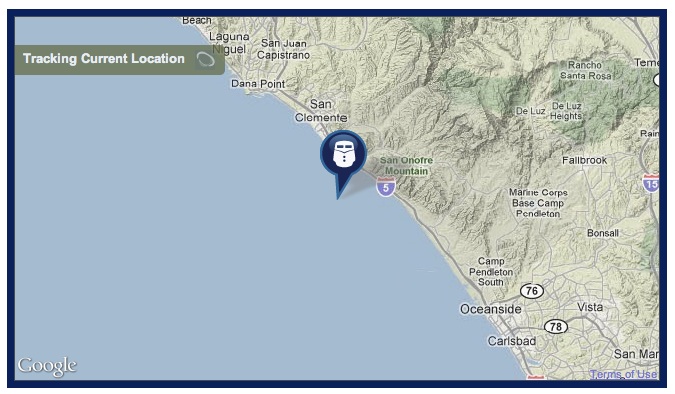Taking the train to visit family in Southern California over the holidays gave me a chance to check out the new Wi-Fi Internet service fromAmtrak. The service was convenient when it worked, but I often had problems connecting to the Web.
Dubbed Amtrak Connect, the free service is available on many regional routes including the Amtrak California services — the Pacific Surfliner in Southern California, the San Joaquin in the Central Valley and the Capitol Corridor connecting Sacramento to the Bay Area. Amtrak California rolled out the service just in time for the holiday travel season.
There was a cool surprise even before I boarded my first train. Many of the buses, which are operated by a contractor, also have Wi-Fi. When I started my trip aboard the Amtrak Thruway motorcoach from Chico to Stockton,I was able to get some work done as we sped down Highway 70. That’s something I couldn’t do if I was driving by myself.
As the San Joaquin train pulled out for Bakersfield, I sought to get online but ran into problems right off the bat. I’m not sure if it is a problem on my end, the network’s or a combination of the two.Before getting into my difficulty, I should explain how the Wi-Fi works aboard the train. As I understand it, there is one car on the train that pulls in outside cell phone signals carrying the Internet connection. That one car then becomes the head of a local network providing the Internet connection to the rest of the cars in the train.
My issue wasn’t with the Internet connection. When it was available, it was fairly reliable and speedy for basic surfing for things such as email or Facebook. Amtrak Connect caps downloads to 10 MB and blocks some popular video/audio websites (but my Spotify streaming music app was able to make a connection although I didn’t fully test it).
There were some points where the connection lagged, but I suppose they were in areas where the cell phone networks aren’t as well established.
The biggest issue appeared to be how the Internet connection was established throughout the train. I could establish a connection in some cars, but very rarely in the cars where I was sitting for some reason. I was able to connect to the train’s network, but I wasn’t able to get the right connection to get on the Internet.
While I preferred the seats in the cars I chose (and I could do a whole series of posts about the different types of seats on these trains), I often moved to a different car for a while to get online.
I never was really able to determine what was going on. Unfortunately, I ran into this problem on nearly every train I rode during the Christmas break.
The immediate matter was that my computer couldn’t get the right Internet Protocol or IP addressto connect until I moved cars, but I don’t know why. I thought it may be something on my computer because many Mac users have reported similar problems for different Wi-Fi networks (and I have had the problem at work).However, some people near me experienced the same problem.
I also thought it was possible the network ran out of addresses to give computers (but that doesn’t necessarily explain why changing cars often helped with the connection). I was riding on very full trains and I was surprised to see so many people on their smartphones and notebook computers. If that’s the case, I read it may be possible to change the network’s settings to allow more connections.
Regardless of where the problem originated, it would be nice if Amtrak Connect had some better help documents to assist people experiencing problems. Of course, if you can’t get online you may not be able to get to the documents.
When it works, the Wi-Fi is a great service to provide passengers. While many people, myself included, like to tout the ability to relax and be somewhat isolated from the hectic outside world aboard a train, Wi-Fi helps those who wish or need to stay connected or productive while traveling. It certainly helped me — I posted two blog entries while aboard the train and got the idea for this current post.
In addition to providing an amenity for passengers, I’ve read that the Internet access can also help with train operations. One component is being able to constantly relay train status data, including its location, back to a central office.
Conveniently, Amtrak Connect’s homepage provides passengers with an estimate of where the train is (although you have to reload the page to get updated locations). Unfortunately, it appears to triangulate its location based off of cell phone signals and sometimes the system gets it hilariously wrong.
This was apparent when the Pacific Surfliner sped down the coast toward San Diego. The map status showed the train running on (or under) the ocean. Based on my estimate, it was about 4.8 miles away from the actual tracks.



Thanks for the report on Amtrak’s wifi service, Ryan. It’s convenient when it works, and the price is right, but from a reliability standpoint it sounds as if it leaves something to be desired. (I haven’t been on a train now for some months, so I haven’t had the opportunity to use it myself.)
My understanding is that when they test electronic ticketing on the Capitol (and other California corridor service), that the scanners used by the conductors will use the same technology. I hope its reliability is better.